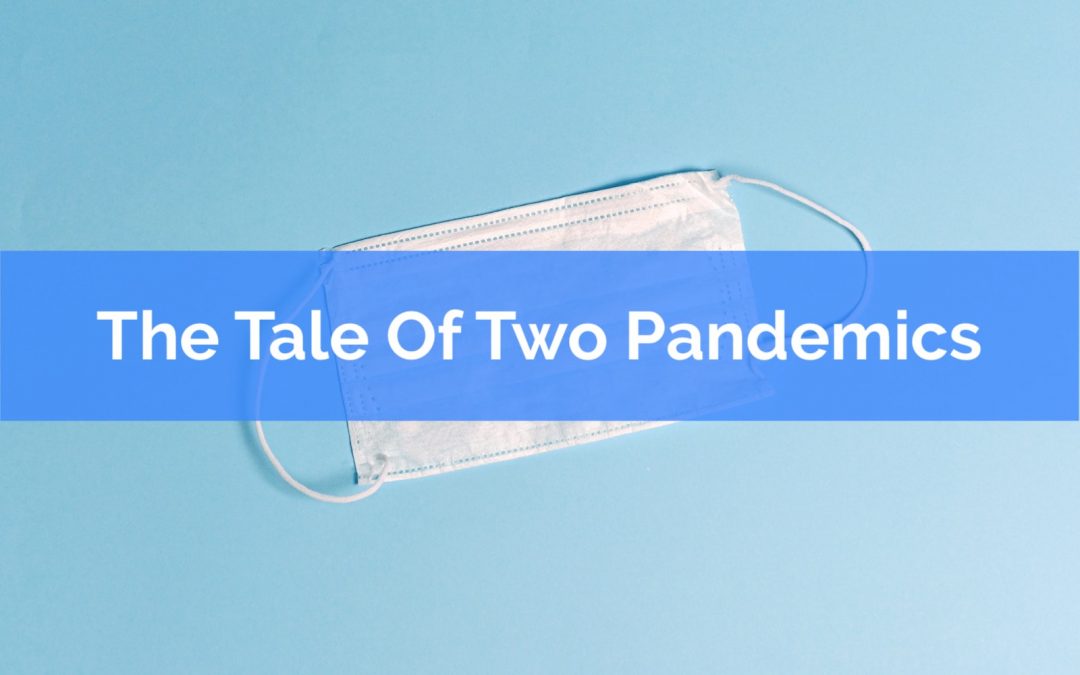
by Owen | Mar 15, 2021 | Buying A Home, Financial Planning, Government Programs, Investment Planning, Saving Money
The global pandemic has impacted all of us differently, our personal finances have gone through many changes and some have “weathered the storm” better than others.
FP Canada, the board that governs the Certified Financial Planner (CFP) designation in Canada, recently came out with a survey called “The Tale Of Two Pandemics” and it highlights both the positive and the negative impact that the pandemic has had on our personal finances (more details on the survey results at the end of this post).
There are some troubling stats within the survey, for example 14% of those in Ontario have been forced out of the labor market, 21% have seen an increase in expenses, and 14% have seen a reduction in work hours/income.
But the survey also highlights the opposite side of the pandemic, many people have not experienced a job loss, or a reduction in income, or an increase in expenses over the course of the pandemic.
In fact, looking at the statistics, it looks like there is a large group of people that have not been affected by the pandemic at all, and another group of people who have actually benefited financially from the pandemic.
This is consistent with the conversations we’re having with clients.
For those who have been fortunate enough to remain gainfully employed, for those who own a home or recently purchased a home, for those with a mortgage or other debt like student loans or HELOCs, and for those who are investing on a regular basis, the pandemic has actually improved their personal finances in a number of ways.
The pandemic has impacted us all differently, but for many people there have been one, two, three or more positive changes that may have actually improved their personal finances. As it turns out, this is especially true for those who had a financial plan already in place.
Here are some ways that a person’s personal finances may have improved during the pandemic…
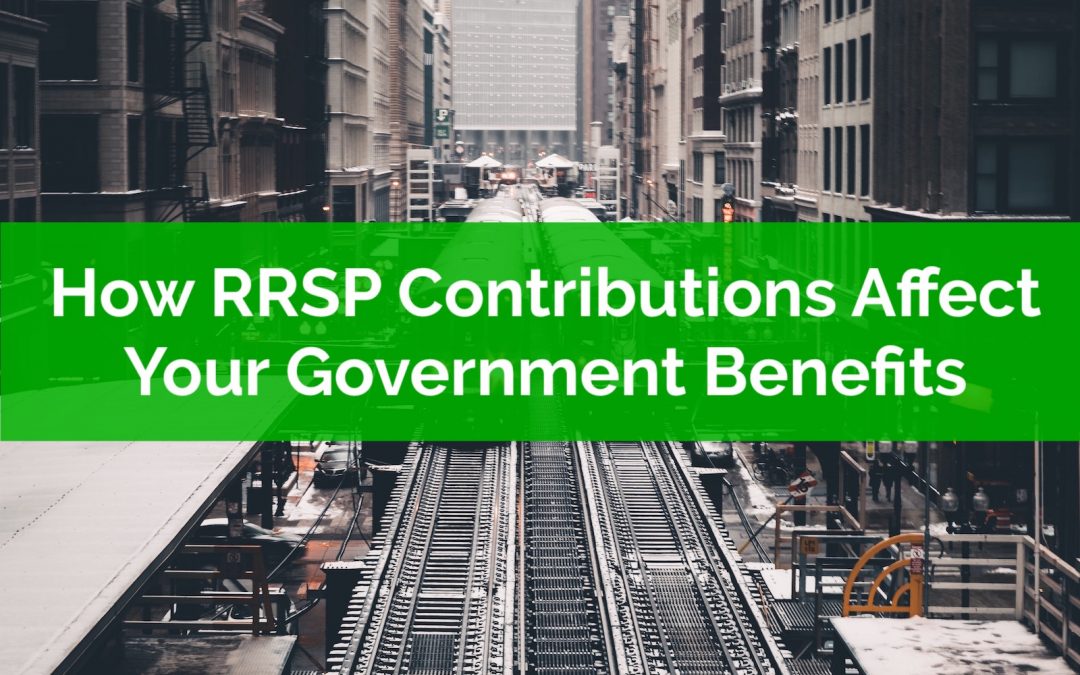
by Owen | Feb 22, 2021 | Financial Planning, Government Programs, Tax Planning
RRSP contributions can be a great tool to help manage your income taxes before and after retirement. They can also be a great tool to help manage your government benefits in a similar way. RRSP contributions affect government benefits like the Canada Child Benefit (CCB), Ontario Child Benefit (OCB), Guaranteed Income Supplement (GIS), GST/HST Credit, Ontario Sales Tax Credit etc etc.
What many people may not realize is that most government benefits have a “claw back” rate that acts like a tax rate. If you earn more income the “clawback” rate will reduce your government benefits. But the opposite also happens, if you make an RRSP contribution and your income goes down, then this “clawback” rate will work in reverse and it will increase your government benefits!
There are a couple situations where RRSP contributions can have a BIG effect on government benefits. Let’s take a look at two real life examples.
One example is a senior who is receiving GIS benefits. We’re going to plan some strategic RRSP contributions to help them maximize their GIS benefits. This is counter-intuitive, we’re always told that TFSAs are best for low-income individuals, but in this case we can use RRSP contributions strategically to maximize GIS.
The second example is a young family with three children. They’re receiving the Canada Child Benefit and the Ontario Child Benefit and we’re going to plan some strategic RRSP contributions to help them maximize their family benefits.
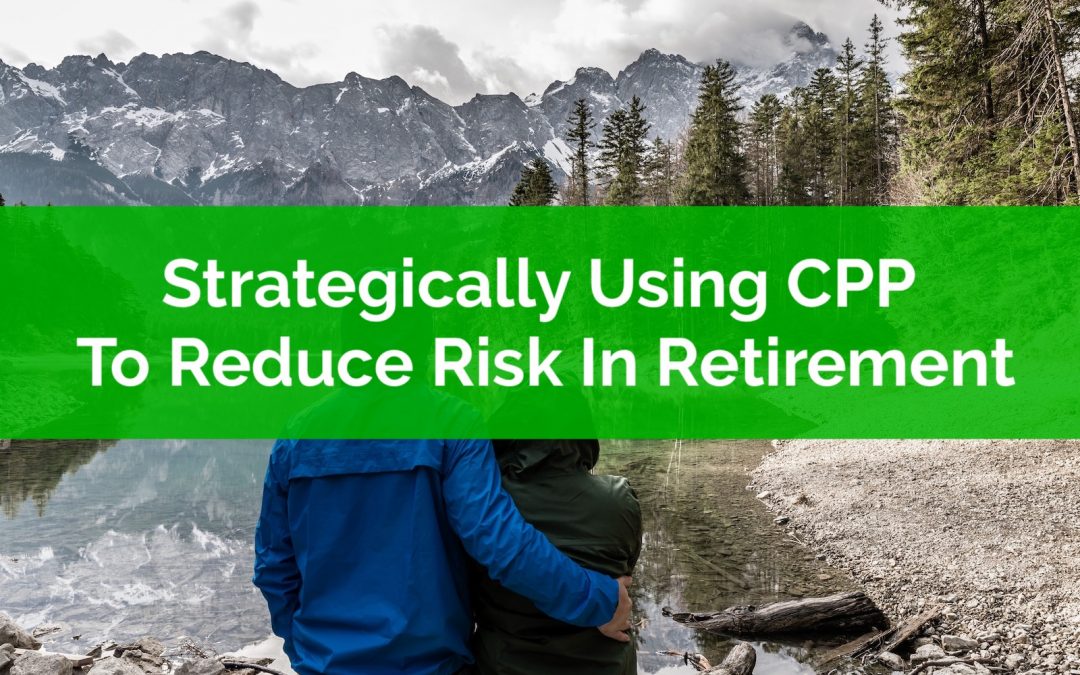
by Owen | Aug 17, 2020 | Government Programs, Investment Planning, Retirement Planning
The majority of people choose to start CPP as early as possible. In fact, over 9 out of 10 people choose to start CPP at or before the age of 65. This means that the majority of people aren’t using CPP strategically to reduce risk in retirement.
The way CPP works means that it can be a great tool to help absorb inflation rate risk and investment risk in retirement. But many people choose to ignore these benefits (or aren’t aware of them in the first place) and simply start CPP as soon as possible.
One common strategy we’ll review in this post (but not the only strategy) is to delay CPP to age 70. By delaying CPP by 10-years the payments are over 200% higher than at age 60. There is a 0.6% increase for each month of delay between age 60 and age 65. Plus, there is a 0.7% increase for each month of delay between age 65 and age 70.
Delaying CPP to age 70 is a great way to reduce risk in retirement but it’s not necessarily the best decision in all situations. There are a few other CPP strategies we can use to help reduce risk in retirement if faced with certain circumstances. This could include low investment returns, negative investment returns, or high inflation.
Rather than start CPP at age 60, or delay CPP to age 70, we can choose to start CPP at different times depending on the circumstances. This flexibility can help us decrease risk in retirement and provide more flexibility.
There are four CPP strategies we can use to help decrease risk in retirement. The first, delaying CPP to age 70, is relatively well known, but the other three strategies we’ll cover in this post are unique and can be used if faced with certain circumstances between age 60 and age 70. This provides a retiree with some flexibility to optimize their CPP start date depending on the circumstances at the time.
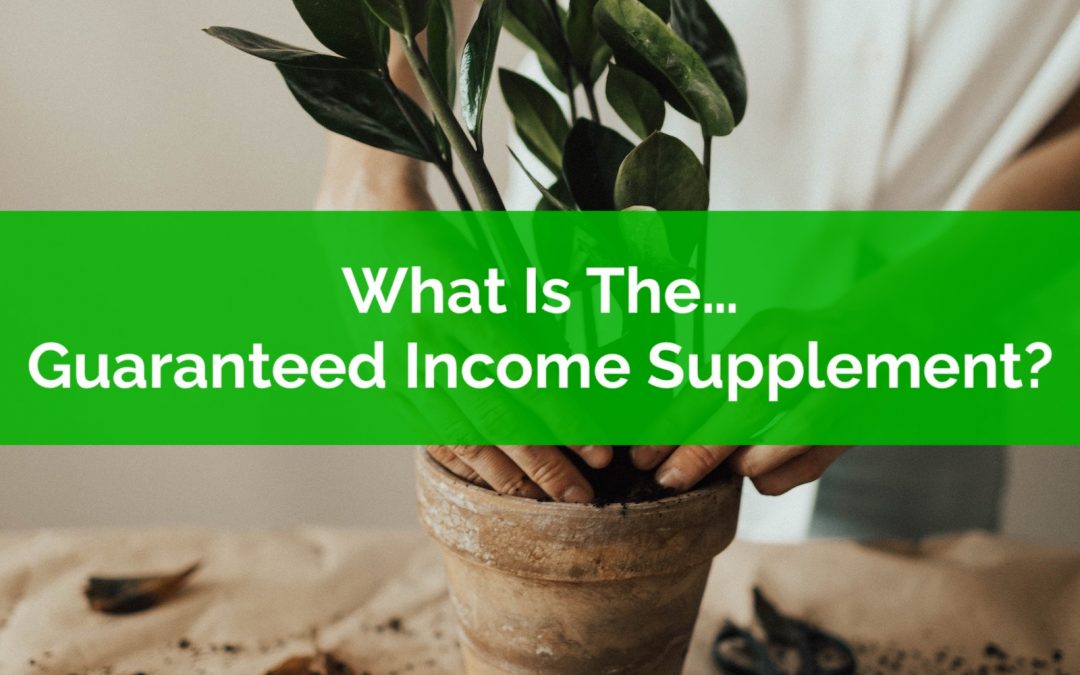
by Owen | Aug 3, 2020 | Financial Planning, Government Programs, Income, Retirement Planning, Tax Planning
The Guaranteed Income Supplement is a government benefit program focused on low-income retirees. It is based on income and is available to low-income Old Age Security (OAS) recipients. It is a non-taxable benefit meant to protect seniors from low levels of retirement income.
The GIS benefit provides income support to over 2.1 million retirees. It provides support to nearly 1 in 3 seniors in Canada. In a given year the Guaranteed Income Supplement will provide over $13 billion in benefits!
GIS is one of the most generous benefits in Canada and because of this it also comes with some extremely high “clawback” rates. GIS benefits get reduced as household income increases. This reduction is called a “clawback” rate because it “claws back” benefits from higher income households. At a certain income level, depending on the household situation, all benefits will be clawed back.
This “clawback” rate is important because it can reach 50% to 75%. This makes low-income retirement planning an important consideration. Not all income triggers the GIS clawback so it’s important to understand where retirement income is coming from and how GIS will be affected. With the average GIS recipient only receiving 54% of the maximum these clawbacks have a big impact.
In this post we’ll review what the Guaranteed Income Supplement is, how it works, how much you could receive, and how the GIS “clawback” works. We’ll also cover some common types of retirement income and how they can affect GIS benefits.
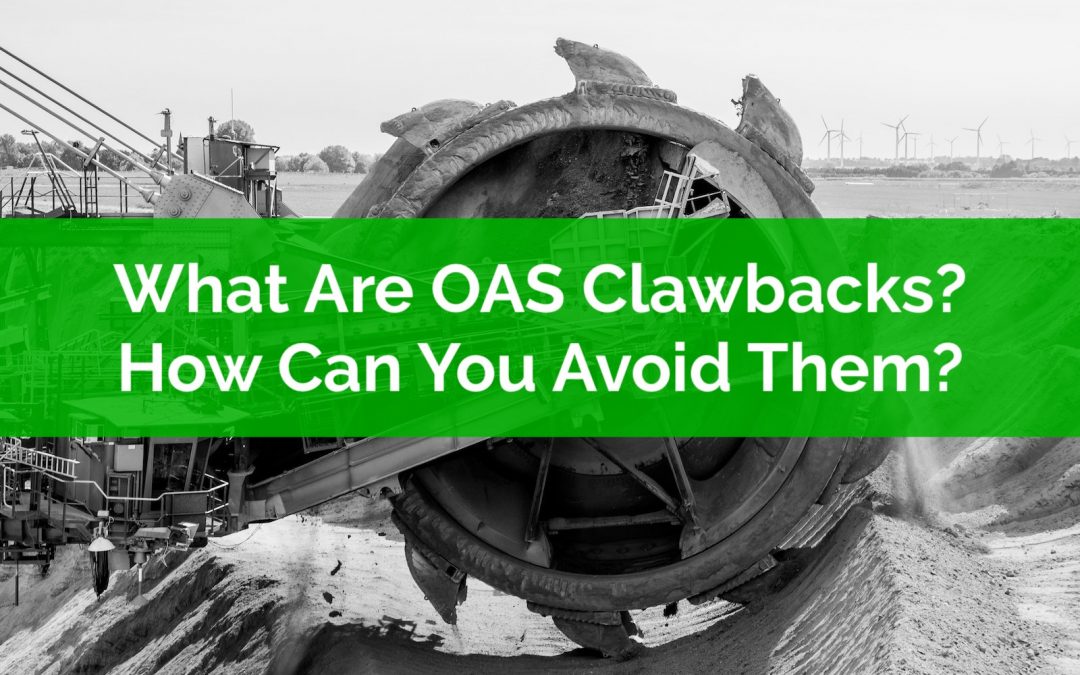
by Owen | Jun 15, 2020 | Financial Planning, Government Programs, Investment Planning, Retirement Planning, Tax Planning
What are OAS clawbacks? How can you avoid them? How impactful are OAS clawbacks in retirement?
The typical retiree will receive an OAS benefit of $7,362 per year (in 2020) and over the course of a 30-year retirement would receive payments of $220,860 (in today’s dollars). That is a significant amount of retirement income!
OAS clawbacks can reduce this income all the way to zero. OAS clawbacks are 15% of net income, so they can have a big influence on a retirement plan. Experiencing full OAS clawbacks would mean that a retiree needs to make up this income on their own through extra investment assets. This may require hundreds of thousands in extra investment assets.
Avoiding OAS clawbacks is an important part of retirement planning. We’d like to avoid these clawbacks if possible. Through various strategies we can reduce or eliminate these clawbacks in retirement. This can be very beneficial to a retiree.
There are a few strategies that can help retirees avoid OAS clawbacks. Which strategy makes sense will depend on the retirees sources of income and their financial assets. In this post we’ve got 7 strategies to consider if you want to avoid OAS clawbacks in retirement.
But first, what is an OAS clawback?

by Owen | Jun 1, 2020 | Financial Planning, Government Programs, Income, Retirement Planning, Tax Planning
Planning retirement income is one of the most challenging aspects of a retirement plan. There are often multiple income sources of income to plan for, as many as 5+ for individuals, and as many as 10+ for couples. These income sources also “phase in” at different times throughout retirement.
Here are some of the most common sources of retirement income…
1. Government pensions like…
– CPP (Canada Pension Plan)
– OAS (Old Age Security)
2. Defined benefit pensions
3. Registered accounts like RRSP/RRIF
4. Locked-in registered accounts like LIRA/LIF (and Defined Contribution Pension Plans)
5. Government benefits like GIS
6. TFSA accounts
Understanding how much income to expect from each of these income sources can be a challenge. They may start at different times in retirement, they may also increase with inflation or not.
On top of understanding how much income these different sources may provide it’s also important to understand how they’re taxed. Some of these income sources are taxed differently. Some are also eligible for income splitting at different points in retirement. This income splitting is a distinct tax advantage for couples and shouldn’t be ignored.
In this post we’re going to look at the seven most common sources of retirement income and some of the planning considerations to keep in mind when planning your retirement income.
Warning: Because of the complexity when planning retirement income it’s impossible to fully highlight all the nuances for each of these sources of retirement income in one post. If you feel uncomfortable planning your retirement income then please speak with a professional (ideally an advice-only financial planner) about building a custom retirement plan. Understanding the phasing of retirement income sources, the tax implications, and the possible government clawbacks on benefits like GIS is well worth the money.






